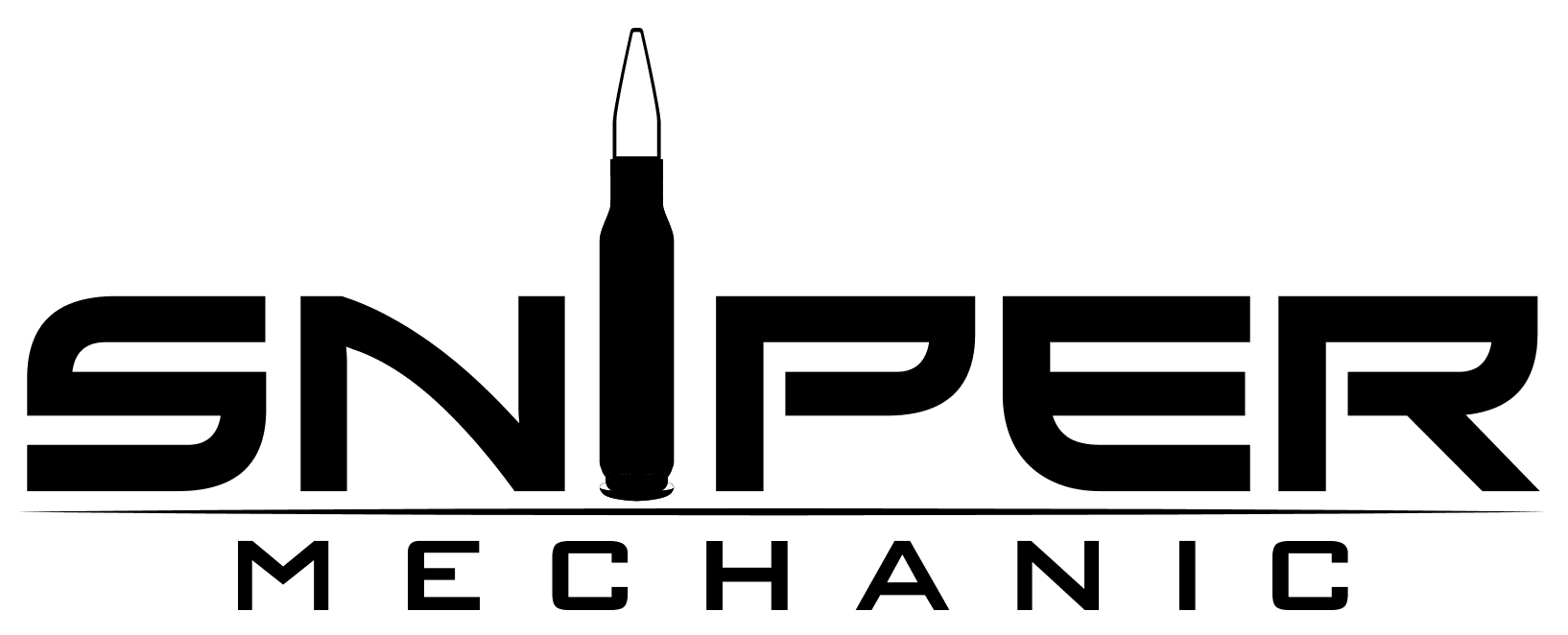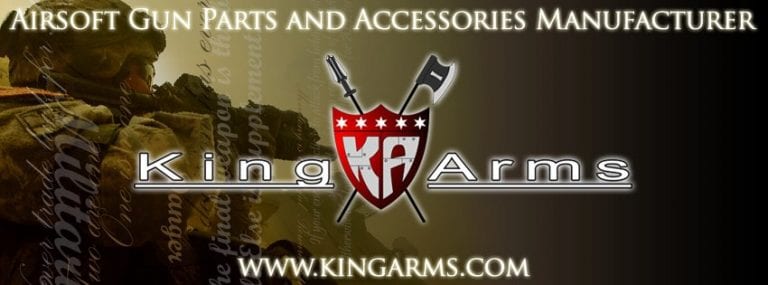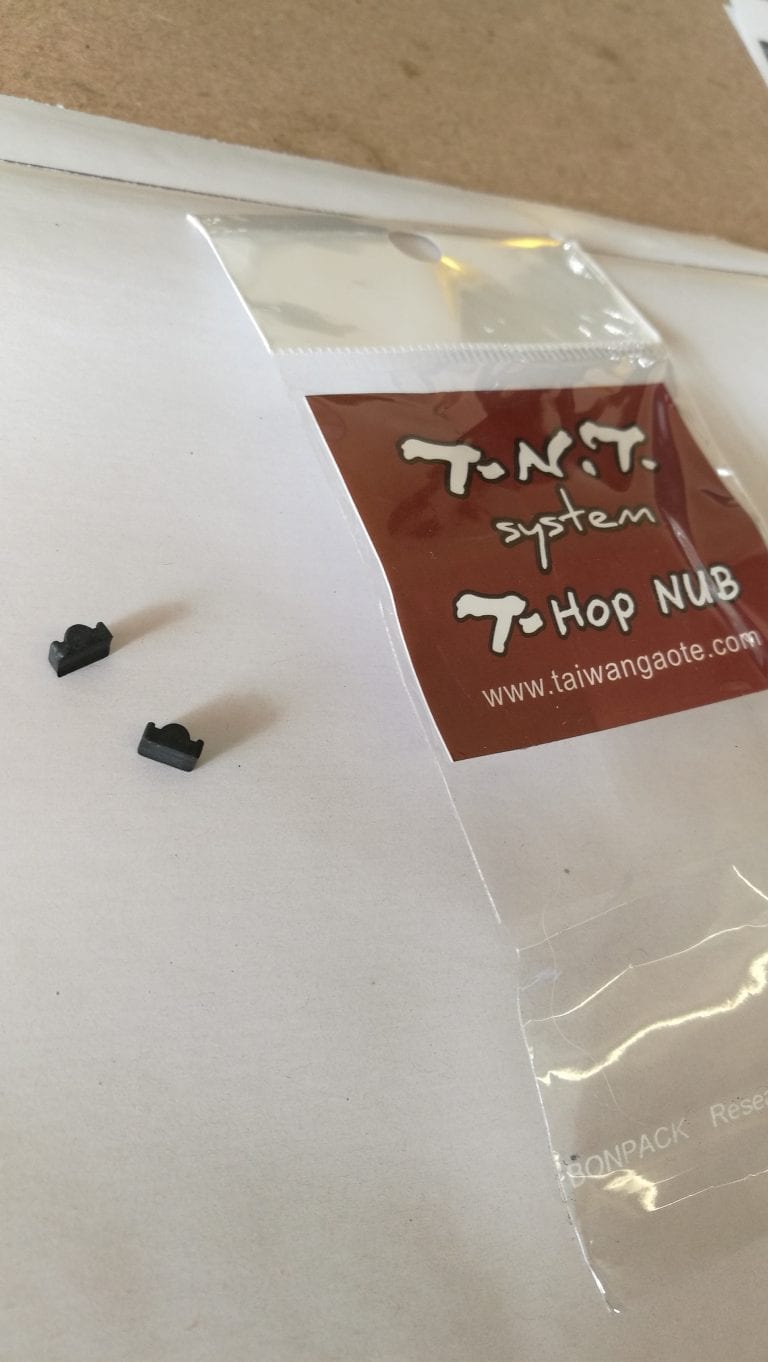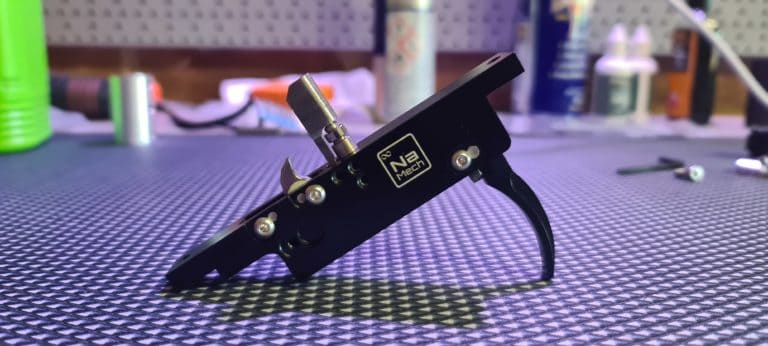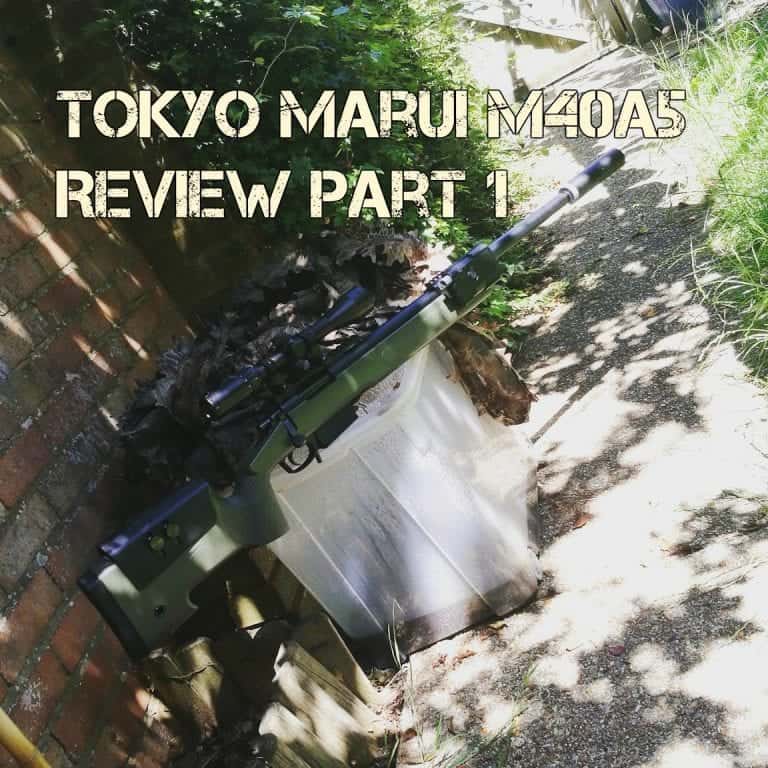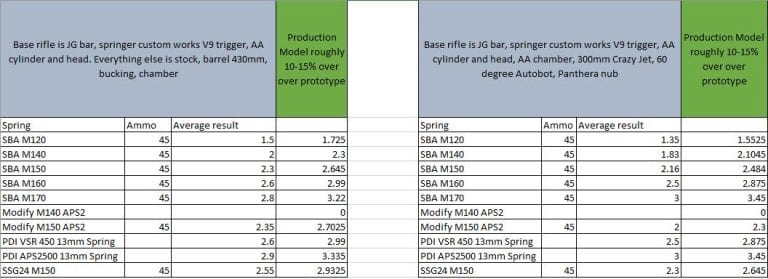Redline N7 Milsim Review
Introduction:
Firstly let me start by saying that the Redline N7 Milsim kit, regulator, airstock, bottle and kydex cover were all kindly provided by the guys over at https://www.redlineairsoft.com/.
We got talking about projects etc and my interest in building a HPA DMR and they kindly offered to provide the internals and I’d source the rest, base rifle, hop, barrel, bucking etc.
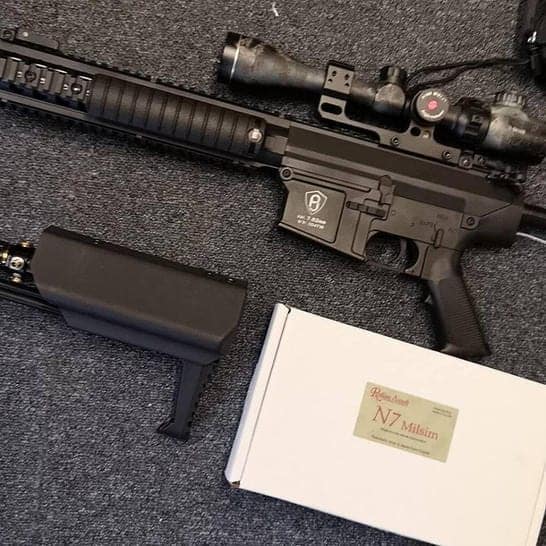
I’ve been looking at doing a HPA DMR for sometime, when I went to France earlier this year a friend of mine from Germany who attended was running a HPA’d G3 and it was really good, performance wasn’t far off a decent upgraded sniper rifle.
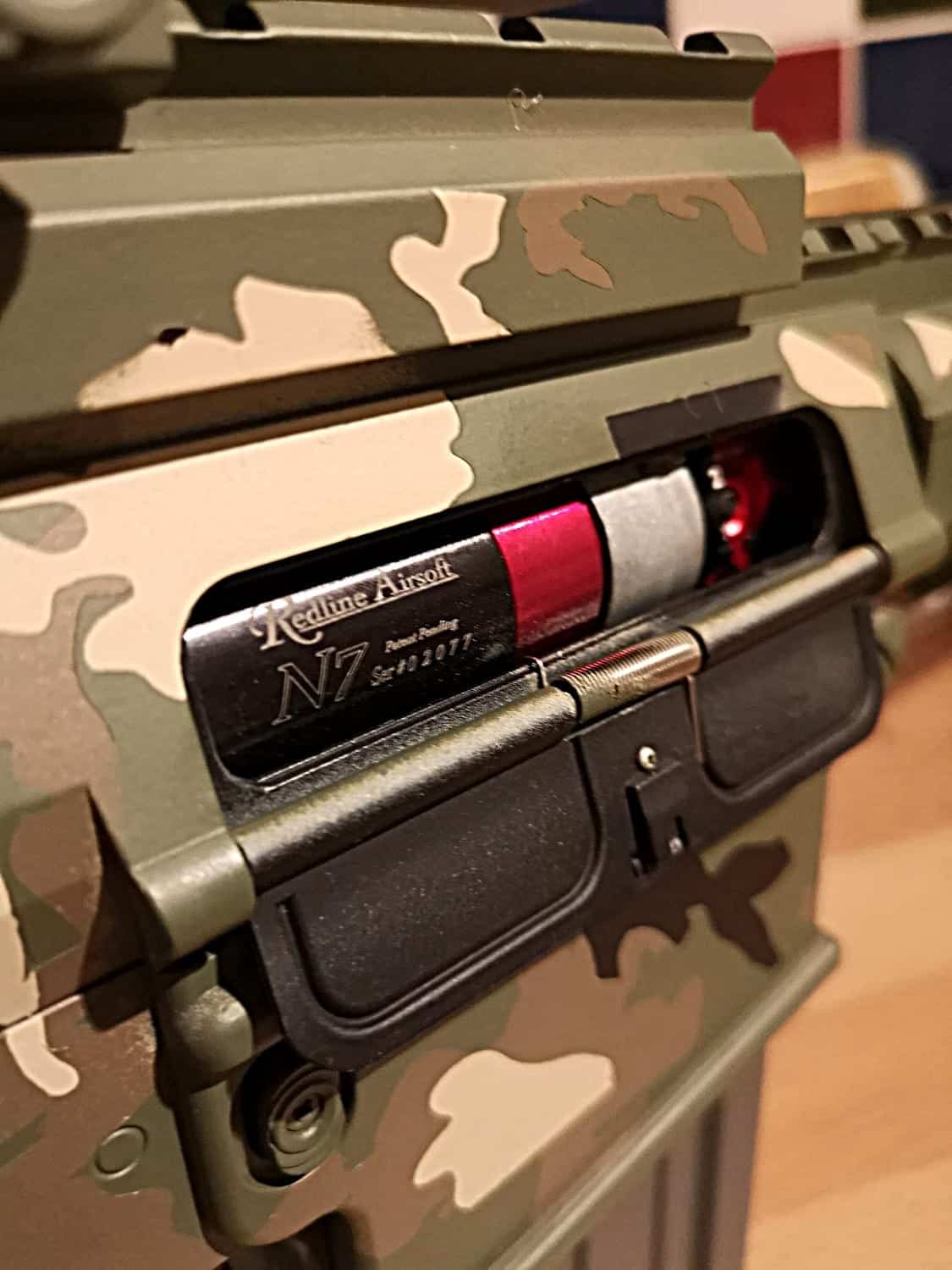
It got me thinking about doing one myself, so after the failed SVD Mancraft SVD PDIK build I decided to give it another go, this time using another purely mechanical engine, the Redline N7 Milsim.
What is the Redline N7 Milsim? For this bit I’ve spoke to Redline and they’ve kindly given me the below information to share:
“New enhanced trigger valve.
Full mech, no batteries required. Add air and go.
Impervious to rain/water.
“Simplicity is the ultimate sophistication”.
I would like to explain one thing that has caused a lot of confusion. We are going to get a bit technical here.
Both the N7 and N7 Milsim use a fixed sized air chamber to control the amount of air used to propel the BB. Most other engines use a combination of fixed chamber size and poppet dwell to do the same thing.
A typical engine uses a small internal air chamber to store pressurized air. That volume of air at normal operating pressure is typically not enough to propel the BB to the desired velocity.
Therefore they use poppet dwell to hold the poppet open long enough to allow additional pressurized air from the airline and hose to flow thorough the engine to propel the BB. Effectively creating a bigger air chamber. That is why those engines have a tunable poppet dwell. To little dwell and you cannot get proper velocity. Too much dwell and you waste air by keeping air flowing through the engine after the BB has left the barrel. If you change anything like BB weight, air pressure, barrel length etc. you must readjust your dwell.
Again it is not an adjustment to make the engine somehow magically work better. It is just there to allow you to get the engine to work correctly under different operating conditions. With this design there are 2 variables that need to be balanced to set the BB velocity. Air pressure and dwell. Internal chamber size is fixed.
The N7 stores very nearly the full volume of pressurized air internally.
While we do have a poppet, its dwell is very short and is essentially fixed. It does vary a bit depending on operating pressure but that is part of the self balancing design of the engine.
That leaves only one variable we need to worry about when tuning the engine for the field, air pressure. All you need to do is adjust the air pressure at the chronograph to set your velocity and you are good to go. No fiddling with the dwell, no worry if it is set correctly. set the pressure and go and your engine is setup for maximum performance.
So what about longer and shorter barrels? Does the N7 over volume or under volume do to its fixed chamber size? No, not really since although the size of the air chamber is fixed. The actual “volume” of air released per shot is determined by the air pressure.
At higher pressures you are stuffing a larger volume of air into that fixed space. At lower pressures you are stuffing a smaller volume of air into that fixed space.
Since the actual volume of air in the chamber is different at different air pressures, when you adjust the air pressure to set the velocity you are actually setting the air volume required to propel the BB. That required air volume is determined by the BB you are using, the length of your barrel, quality of the hop-up air seal, your desired velocity etc. You are essentially tuning the engines air volume to your guns unique setup and needs.”
Parts Used:
For this build, I used the below:
-
Base rifle was an A&K SR25k
-
Maxx Model Hop Unit.
-
TNT 370mm APS-x Barrel
-
TNT 50 Degree TR-hop
-
TNT T Nub
-
Redline Airsoft N7 Milsim Engine
-
N7 SR25 Nozzle
-
Redline Airsoft Gen2 Airstock and Regulator
-
Milwaukee Customs Kydex cover for the 13cl HPA Tank
The base gun used was the A&K (P&J) SR25k, which even if left as an AEG is a solid performer and a great base gun for upgrades. I opted for the SR25 platform as in the real world it’s chambered in 7.62 and considered a true DMR, so no winging from the DMR elitist 😛
I’ve started using the TNT Studio parts in a number of builds now as I find them to work extremely well for the price, their buckings are essentially Rhop buckings which fit and work in a variety of barrels and give awesome performance.
As for the Maxx model hop unit, this is quite simply one of the best, if not THE best hop unit available. It’s is machined well, versatile, holds adjustment, consistent and just works well.
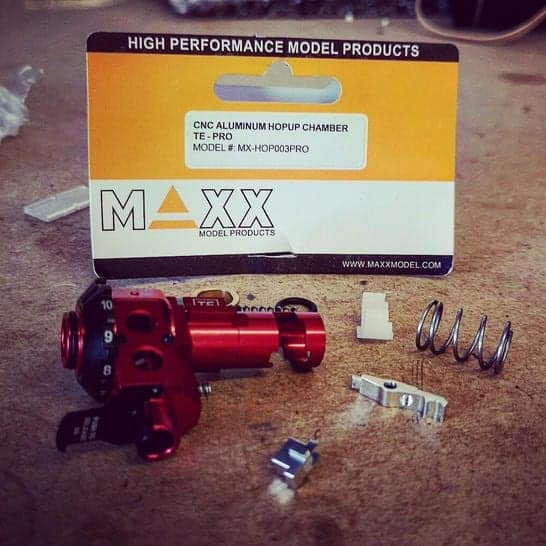
Redline N7 Milsim Performance:
After the rather long install process, which I haven’t covered on here as there are already a number of videos out there on it and I genuinely forgot to track the install progress as I ended up getting so engrossed in getting the thing together!
So, performance wise, I’ll start with the sound. The actual muzzle report of the rifle is quiet, due to the way the engine delivers air, it’s designed so that it only releases enough air to get the bb firing at the joules you set.
In simple terms this means there is no dwell settings as air is only released at the trigger is pulled and the available air is kept inside a chamber in the unit itself, this air volume is determined by the output you’ve set on the reg, so there is only ever enough air delivered to get the bb down and out at the power you set, with no over voluming once set properly.
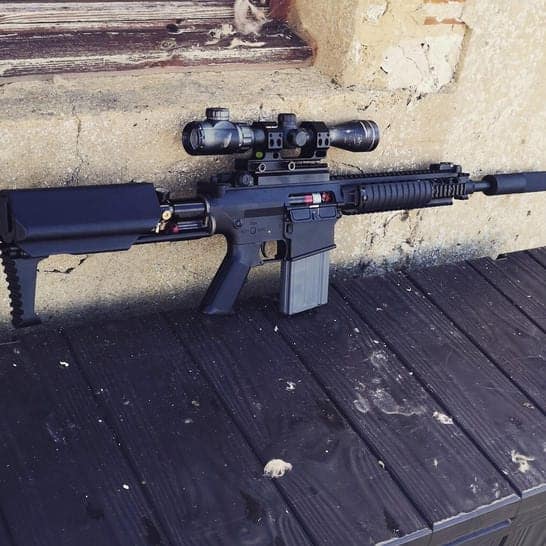
There is however one sound that is present, that is the sound of the nozzle resetting which is a mechanical pop/twang sound. It’s not a huge issue at range and is only really noticeable as the shooter. I’m looking at how I can reduce this by filling the gearbox shell with foam etc where there is excess space.
With the included regulator on HPA, consistency is max of 3fps, with average being 1-2fps across 10 shots. This is as expected from a HPA build and is impressive, it leads to some very consistent shots down range.
The hop setup I’ve gone for was chosen due to me experience with similar set ups in other rifles which have had great results. Originally when I had this gun together I was getting a lot of inconsistent hop issues, the rifle had great range, about 87m on 4’s with rifle set to 1.7J. But the rounds where under/over hopping, occasional flyers etc.
Stripping the rifle down and looking at the hop unit, I could clearly see the nozzle was making contact with the bottom of the hop unit, which was causing poor bb placement and the air to be sent over the bb rather than straight behind it.
This required me to simple tighten the grip screws and tap the rear of the gearbox in order to bring this up. Once that was done, I was shooting rounds down range one after another with an incredible degree of consistency.
In terms of how many shots I get out of this on the 13cl/3000 tank I’ve not accurately measured it, but a rough estimate is around 500 or so rounds. It could be more, but I try not to let me tank get below 1k PSI are I manually pump them!
Redline N7 Milsim Overview:
So my final thoughts on the N7 Milsim from Redline Airsoft are simply…..it’s pretty damn good.
The install was a bit more involved and time consuming some of the other HPA builds I’ve done, not hugely difficult, just a fair bit of tinker and material that needs to be removed.
Performance wise the rifle is a beast, it’s got range, it’s got accuracy, no HPA lines to get snagged on, being mechanical I’ve got no concerns running this in any weather conditions, additionally there’s no need for a battery either.
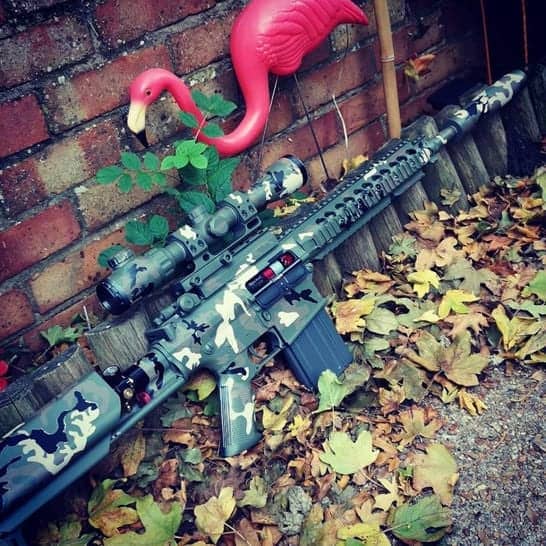
*If you’re interested in the paintjob on this, check out THIS link to see how I did it.
Let me break this down into the pro’s and con’s:
Pro’s:
-
Using the airstock Gen2 means no external lines, so nothing to get tangle on or be mindful off which is great, you can however tun this with a normal hose etc if you wanted as it uses a normal 6mm line which can be ran out the rear or through the pistol grip.
-
Being closed bolt design, it’s very consistent in terms of bb placement, each round seems to follow the previous one.
-
The regulator is damn consistent (2fps average) and easy to adjust, only downside is no gauge.
-
Performance wise, even when set at the 1.7J (sub 450 fps limit) it has some serious range on heavy ammo, specifically 4-48’s.
Cons:
-
The install, atleast in my case was a lot of work, lots of material needed to be removed both from the gearbox and the stock tube. The supplied screws didn’t fit as they were to short, so I’d say this isn’t a build I suggest to people who aren’t comfortable using a Dremel/other similar cutting tool.
-
The noise, being purely mechanical there is a fair amount of mechanical noise from the valve/nozzle, it’s a distinct metal twang each time the nozzle resets. It’s more noticeable to the user than to others down range, but isn’t nearly as quiet other electro pneumatic HPA engines. The actual muzzle report itself, when using a good suppressor is almost non existent.
Things to keep in mind:
-
This is for Semi auto only builds, there is no full automatic, no burst function etc, being mechanical there is no FCU.
-
It only fits V2 (V2 long with nozzle) gearboxes
Links:
Redline Airsoft: https://www.redlineairsoft.com/
Remember guys, if you’ve enjoyed this post or any of the other content I’ve put out, please check out my other platforms and consider becoming a Patreon
